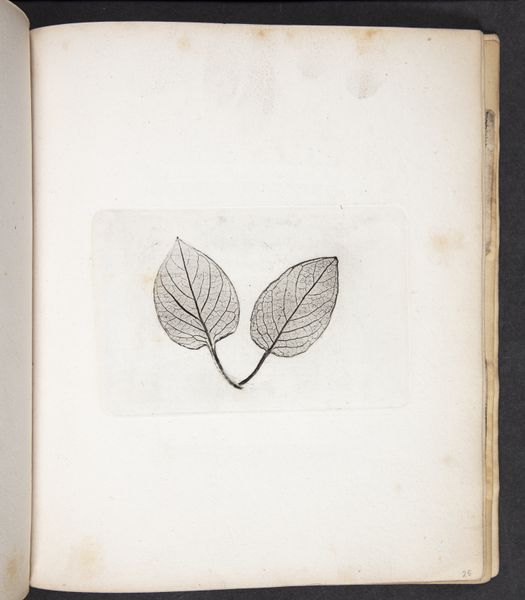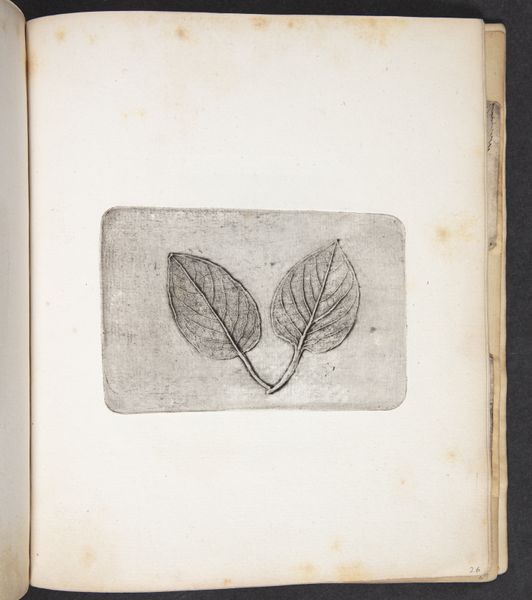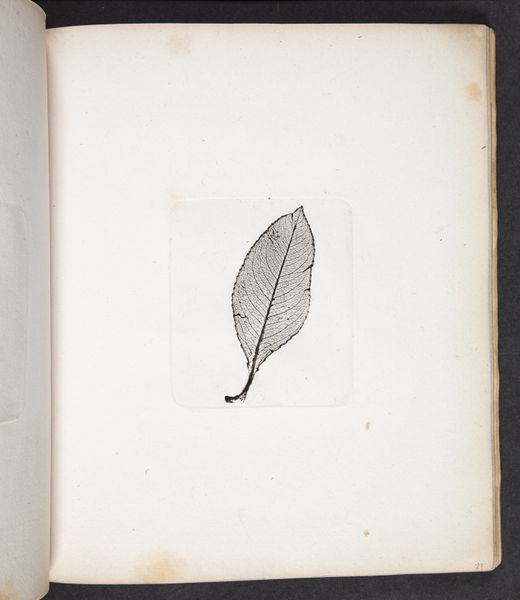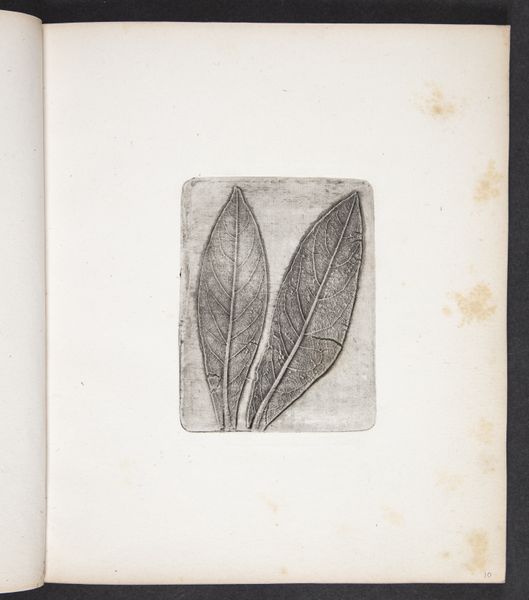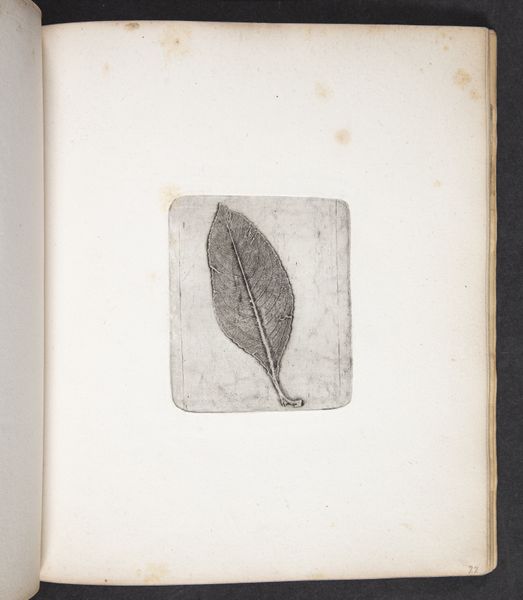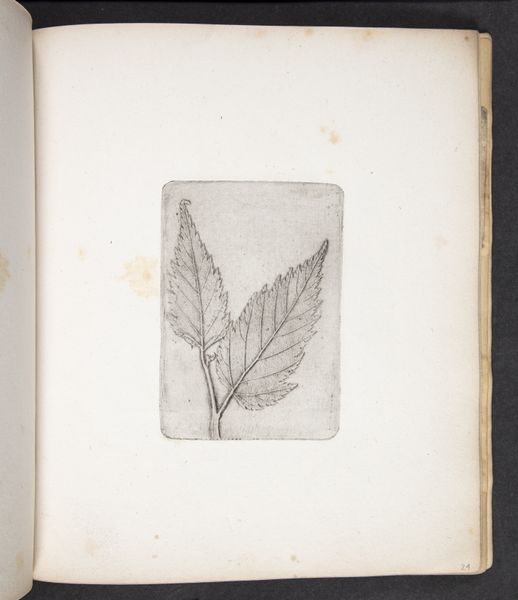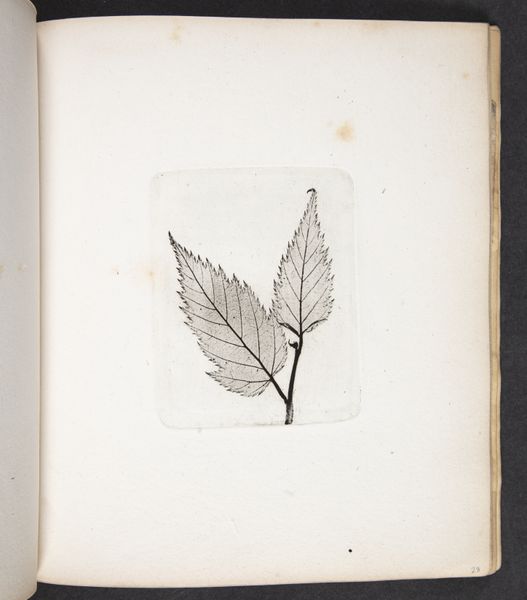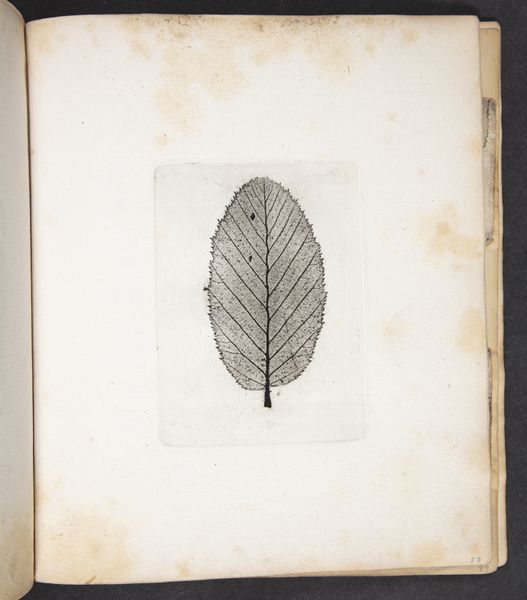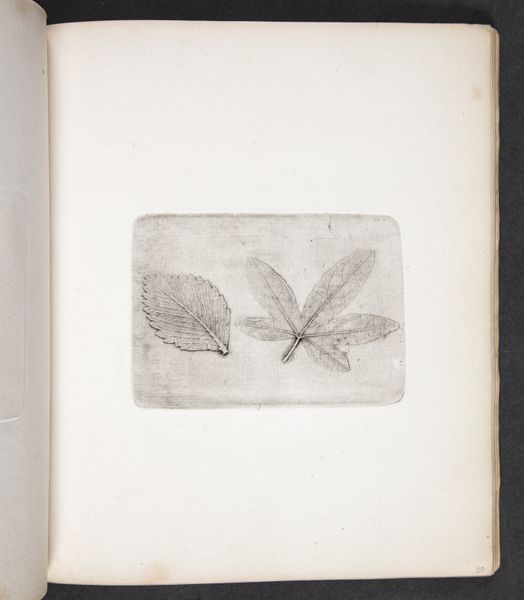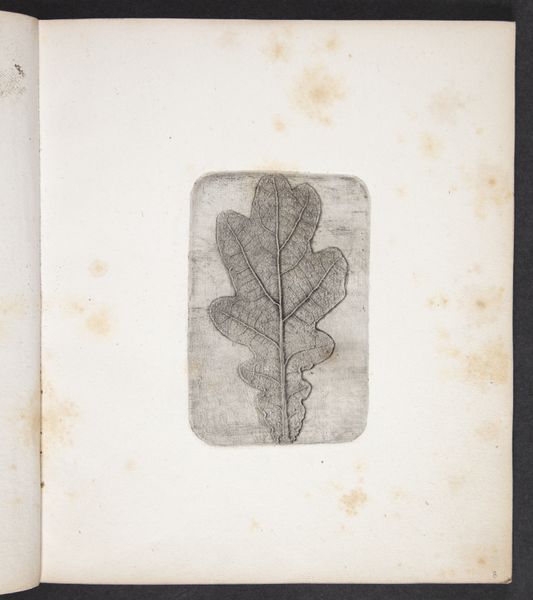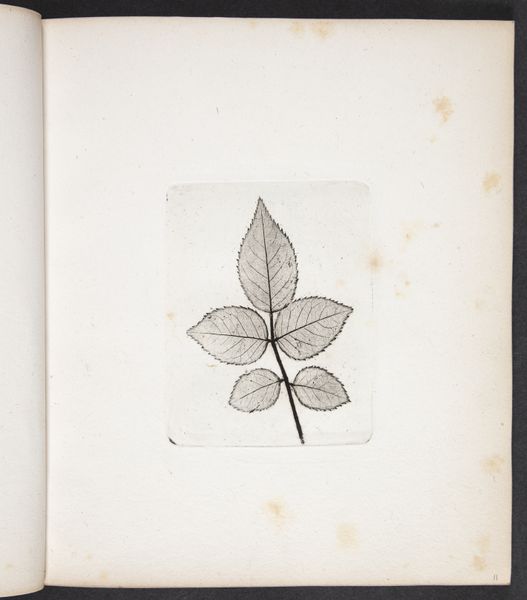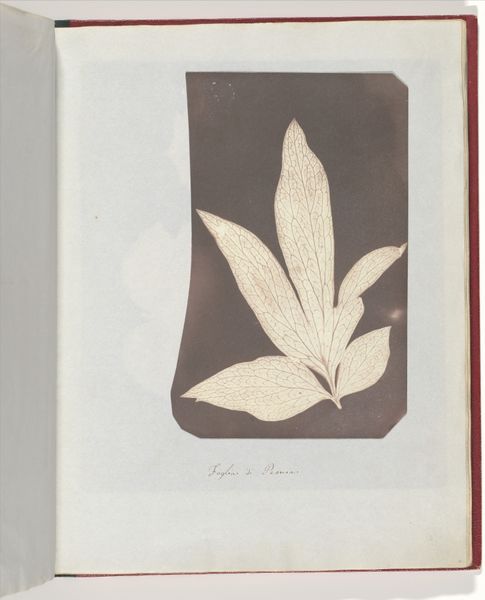
drawing, print, paper, ink
#
drawing
#
ink paper printed
# print
#
paper
#
personal sketchbook
#
ink
#
ink colored
#
sketchbook drawing
#
sketchbook art
#
realism
Dimensions: 207 mm (height) x 182 mm (width) (Bladmål), 78 mm (height) x 112 mm (width) (Plademål)
Curator: Right, let's dive into this delicate print titled "Aftryk af blade," created in 1833 by Peter Larsen Kyhl. It resides within his personal sketchbook. What strikes you immediately about this work? Editor: It has a haunting quality. Those skeletal leaves, so meticulously rendered, evoke a sense of fragility and transience. It makes me consider what these leaves might symbolize in terms of decay and memory. Curator: Indeed. It's essentially a drawing using ink and paper but, notably, produced as a print. I find that really shifts the meaning for me because it takes what seems like a very personal act, capturing a natural form, and turning it into something repeatable, potentially shareable. Like a quiet manifesto. Editor: That act of reproduction, as you point out, feels charged. Is Kyhl speaking to a broader ecological concern, perhaps? Or is this reproduction of nature a reflection of how he viewed the role of humanity at this point in history? You have to consider how industrialization must have been at the forefront. Curator: Possibly both! There’s an interesting tension at play. He seems captivated by nature's minute details. Yet, through the printmaking process, he is asserting a kind of control over these delicate forms. I can’t help but imagine these fragile leaves imprinted on pages destined for binding, effectively imprisoning them within the narrative. It’s thought-provoking. Editor: Absolutely. Thinking of feminist theory, the notion of "capturing" nature has historical connections to patriarchal structures of power. I find myself pondering if Kyhl's intention was an attempt to preserve their inherent beauty or something else entirely? It's like he's both admiring and dominating these fragile beings. Curator: And there’s such a melancholy tied to this, isn’t there? As leaves of the past, these botanical portraits can prompt consideration about mortality but also how it interweaves with the march of time, don’t you think? Editor: Definitely. This work becomes a stage, spotlighting broader narratives related to mortality. Curator: Kyhl offers an opportunity for all viewers, even now, to be immersed into questions on conservation, and the meaning of our existence. Food for thought.
Comments
No comments
Be the first to comment and join the conversation on the ultimate creative platform.
